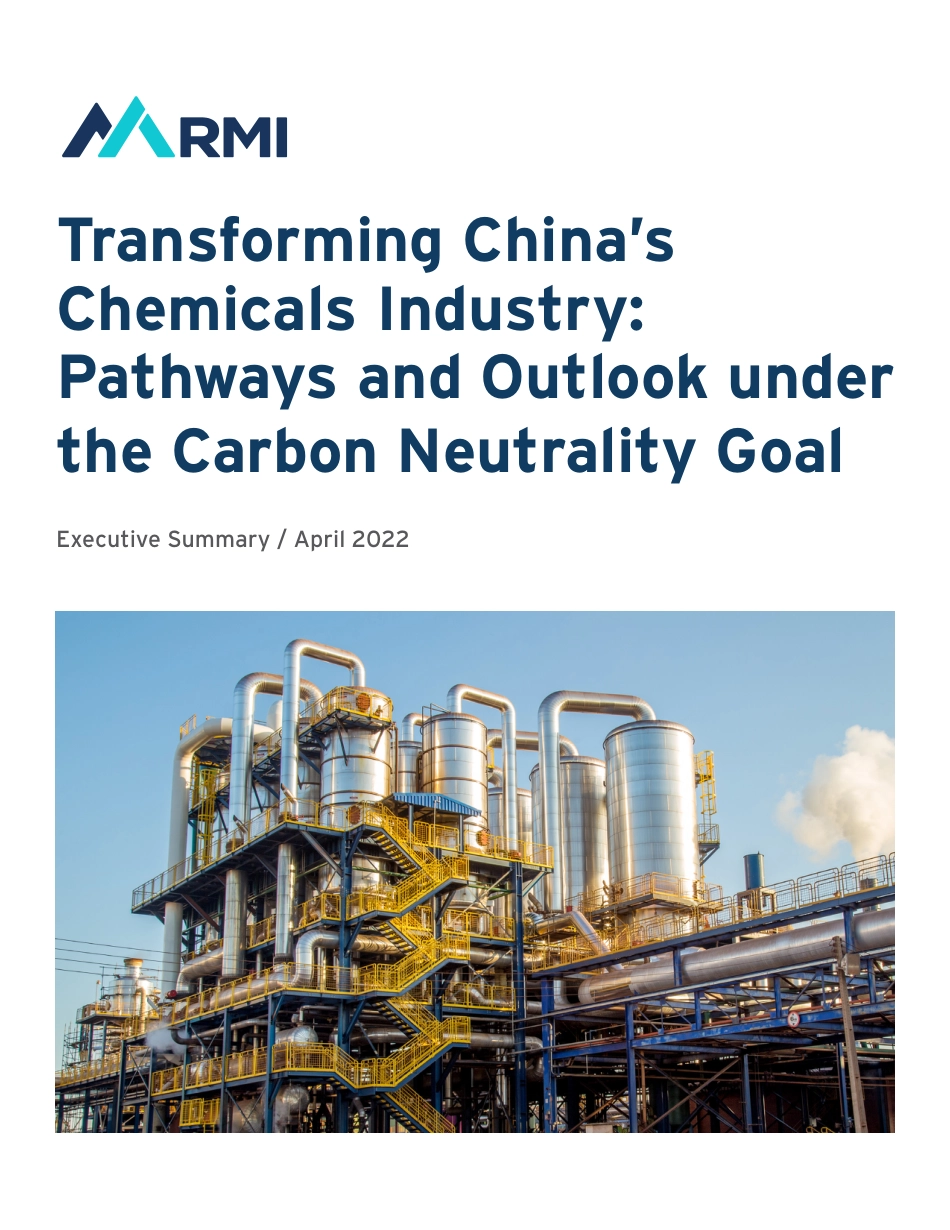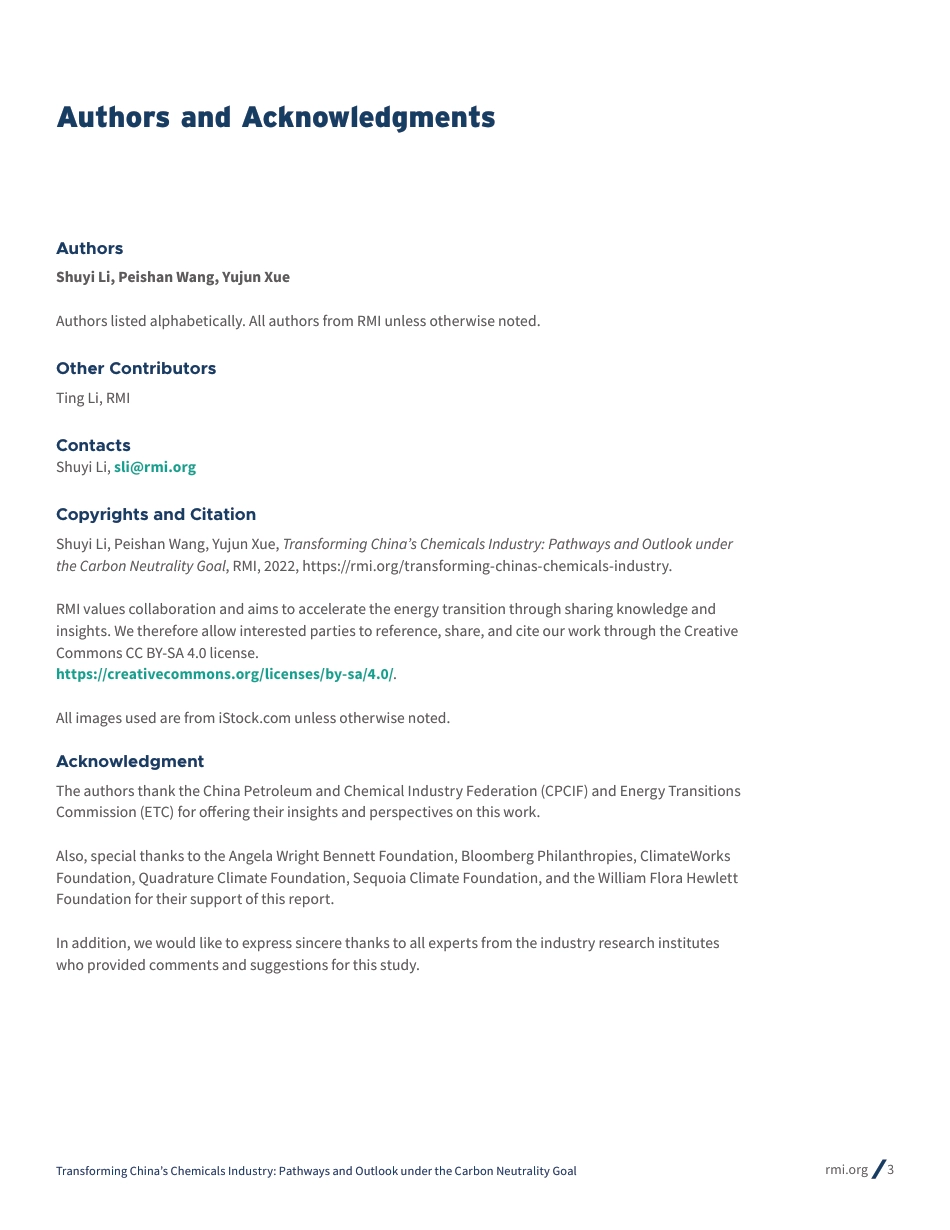Transforming China’s Chemicals Industry: Pathways and Outlook under the Carbon Neutrality GoalExecutive Summary / April 2022 rmi.org / 2Transforming China’s Chemicals Industry: Pathways and Outlook under the Carbon Neutrality GoalAbout RMIRMI is an independent nonprofit founded in 1982 that transforms global energy systems through market-driven solutions to align with a 1.5°C future and secure a clean, prosperous, zero-carbon future for all. We work in the world’s most critical geographies and engage businesses, policymakers, communities, and NGOs to identify and scale energy system interventions that will cut greenhouse gas emissions at least 50 percent by 2030. RMI has offices in Basalt and Boulder, Colorado; New York City; Oakland, California; Washington, D.C.; and in Beijing, People’s Republic of China.rmi.org / 3Transforming China’s Chemicals Industry: Pathways and Outlook under the Carbon Neutrality GoalAuthorsShuyi Li, Peishan Wang, Yujun Xue Authors listed alphabetically. All authors from RMI unless otherwise noted.Other ContributorsTing Li, RMIContactsShuyi Li, sli@rmi.orgCopyrights and CitationShuyi Li, Peishan Wang, Yujun Xue, Transforming China’s Chemicals Industry: Pathways and Outlook under the Carbon Neutrality Goal, RMI, 2022, https://rmi.org/transforming-chinas-chemicals-industry.RMI values collaboration and aims to accelerate the energy transition through sharing knowledge and insights. We therefore allow interested parties to reference, share, and cite our work through the Creative Commons CC BY-SA 4.0 license. https://creativecommons.org/licenses/by-sa/4.0/. All images used are from iStock.com unless otherwise noted.AcknowledgmentThe authors thank the China Petroleum and Chemical Industry Federation (CPCIF) and En...



